How to use a washing machine
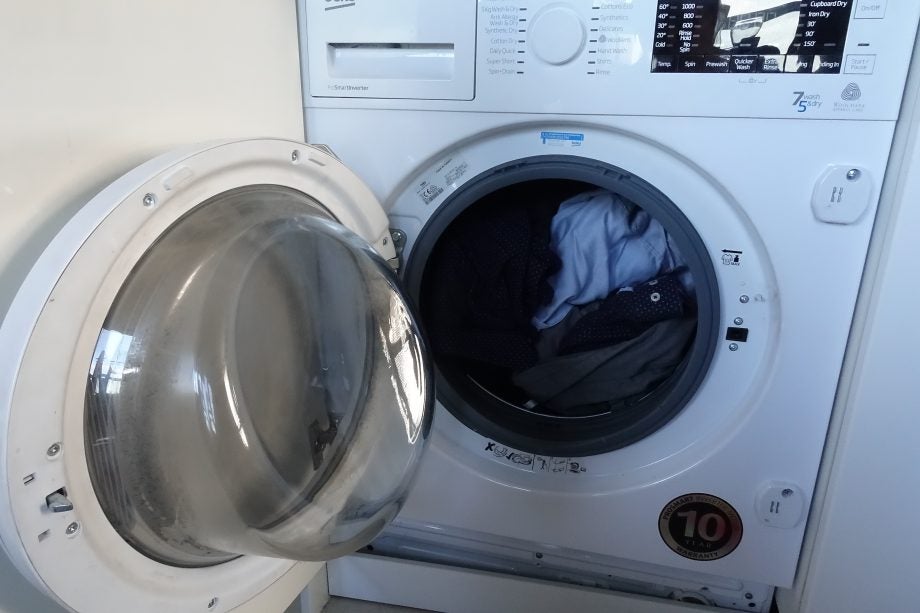
As essential as washing machines are, many don’t make it easy to do anything beyond a basic clean. If you’re puzzled by your washing machine’s weight limits, programmes or different compartments in the detergent drawer, you’ve come to the right place. Here, I’ll show you how to use a washing machine and all of its features.
Doing laundry needn’t be laborious or difficult. By getting to know your machine, and taking a few precautionary measures to protect your clothing, you could easily have a hamper of clean laundry in no time.
Related: Best washing machines
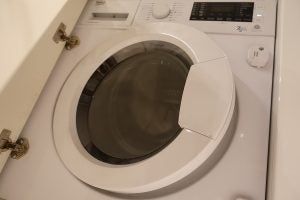
Sorting your laundry
Before you load up your machine, it’s important to sort your laundry. Start by separating light and dark items, and checking the tags for washing instructions. Separating light and dark items helps to avoid any colour transfer mishaps. Be mindful of anything that’s particularly likely to bleed colour – such as a new pair of jeans. The tags usually feature laundry care symbols for which washing machine programme and temperature you should use.
Sticking to these instructions as closely as possible will ensure you protect your clothing and avoid any nasty surprises. For example, some fabrics may shrink if washed in hot water, while delicate items of clothing shouldn’t be washed in the machine at all – for example, those with “dry clean only” labels such as leather, or particularly fragile fabrics. Remember, also, to fasten any hooks and zips to avoid snagging.
Mesh laundry bags are handy if you want to wash particularly fragile items, or throw a few more delicate pieces into a standard clothes wash. If you don’t have a mesh bag at hand, you can always try using a thin pillowcase (bearing in mind any colour transfer issues).
Finally, don’t forget to check all pockets. It’s always disheartening to come back to a fresh load of laundry covered in paper tissue fluff.
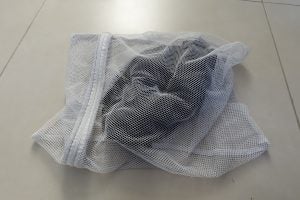
Drum capacity
Once you’ve sorted your laundry, it’s worth considering your particular machine’s weight limits. Every washing machine has a specified maximum load weight, which means how much dry clothing you can cram in there for a single wash.
A machine’s capacity can range anywhere between 5kg and 13kg, with the smallest suitable for single-person households and the largest for big families. Most common are machines with a 7-8kg weight limit, suitable for a small-to-medium family.
If you know you’ll need significantly more or less capacity, then keep this in mind when buying a washing machine. Take a look at this handy washing machine capacity guide for choosing the right drum size for your needs and for an idea about what those weight limits mean.
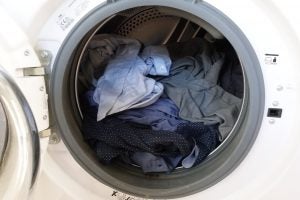
Loading your machine
Avoid overstuffing your machine – your laundry needs space to move around, so all the dirt can be sufficiently agitated. If overloaded, your laundry may not wash properly, and can come out smelly or with streaks of detergent still on it.
A common way to test if you’ve left sufficient space is trying to fit the palm of your hand in the drum. If it’s too tight, it means you’ve overloaded your machine.
It’s also useful to alternate between small and large items when loading your machine, making sure the load is even and that items are less likely to become tangled. To avoid the latter, I normally place particularly tricky items, such as tights and leggings, in a separate washing bag.
While underloading doesn’t result in any issues as such, it is a waste of water and electricity, and can make your machine spin more loudly. For best results, use a suitable “quick” programme for small loads.
Finally, bear in mind that the recommended load size will also depend on the particular programme you use. It’s generally considered that small loads fill about a third of your machine, while medium loads take up half, and large loads about three-quarters of the maximum capacity.
As mentioned above, a “quick” wash is suitable for a small or a medium load. Medium is also best for a “delicates” wash, while a “cottons” programme would easily handle a large load.

Choosing your programme and settings
The range of available programmes and customisable settings will vary according to the model of machine. It’s worth familiarising yourself with your machine’s instruction manual to see what options are available. Using the correct programme can ensure you get the best results and protect your clothing in the most energy-efficient way possible.
Common washing machine programmes include:
- Cottons: often considered the standard or “normal” cycle. With fast spin and hot or warm temperatures, it’s suitable for washing cotton and denim, bed linen and towels, and heavily soiled items.
- Synthetics: sometimes called the “permanent press” or “easy-care” cycle. With a moderate spin and warm temperatures, it’s suitable for washing any synthetic materials that can’t be ironed and thus need a slower spin to avoid wrinkles.
- Delicates: with a slow spin and cooler temperatures, this programme is best for more fragile items such as lingerie, sheer or laced fabrics, silks or other woven items. Sometimes, a machine will have additional programmes for woollens and/or handwash, offering you the chance to find the optimal spinning and temperature presets.
- Quick wash: also known as “fast wash”, is most suitable when you’re in a hurry and have fewer items to wash and only lightly soiled clothes.
- Other programmes may include “eco” wash – an energy and water-saving wash at slightly lower temperatures – as well as specialist settings for sportswear and shirts, and hygiene or anti-allergy settings for removing allergens.

In addition to choosing a programme, washing machines often let you tweak the particular washing temperature or spinning speed.
Spin speeds can range from 600rpm to 1400rpm, with delicate and no-iron items requiring lower speeds and soiled laundry a faster spin.
Temperatures can range from cold to 95ºC. While hot water kills germs better, removes built-up grime and dissolves detergents more effectively, cool water is most appropriate for delicate items.
To save energy, use hotter temperatures only if you need to – for particularly soiled fabrics, for example. These days, many detergent brands and clothing manufacturers claim it’s perfectly fine to wash your regular laundry at 30ºC.
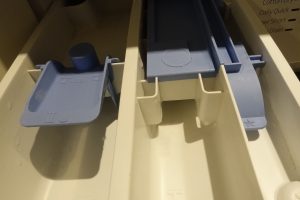
Adding detergent
The kind of detergent to use will depend on your particular washing machine as well as the items you’re washing. If in doubt, check your manufacturer’s instructions and your clothing labels.
Some detergents aren’t suitable for all types of fabrics. Some are meant for washing colourful or white clothing, others for special materials such as silk and wool.
Front-loading washing machines have a detergent drawer. Familiarise yourself with the layout of your detergent drawer in your manufacturer’s manual because the order of compartments can differ.
In general, however, detergent drawers tend to feature separate compartments for detergent (usually represented by the symbol “II”), pre-wash liquid (for soaking heavily soiled items and usually bearing the “I” symbol) and fabric softener (usually marked with a flower symbol). Sometimes the detergent compartment can also have separate areas for liquid and powdered detergent.

But with a range of options available, you can skip the detergent compartment entirely and use washing capsules or pods by placing them straight into the drum before you load the laundry. Alternatively, you can place a dosing ball with liquid detergent on top of your laundry load.
Note that fabric conditioner should never come into direct contact with your laundry and should always be placed in the designated compartment of the detergent drawer.
Top-loading washing machines will require you to pour the detergent straight into the drum before loading the machine. For those worried about clothing soaking in detergent, capsules or pods can also be used in the same way.
If in doubt, always check the label on your detergent to see how much to add. Don’t try to free-pour, as too much detergent can leave residue on your clothes, making them stiff and riddled with white streaks.
Finally, don’t forget to remove your laundry as soon as it’s done. This will help to keep it fresh and avoid musty-smelling clothing or such smells in your machine. I’d also recommend letting your washing machine air out a bit, by leaving the door/top open and opening the detergent drawer if you have one.


